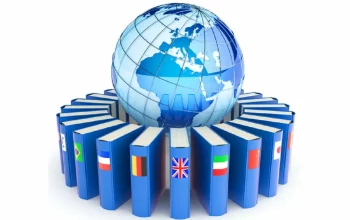The history of online translation https://lingvanex.com/translation/english-to-tagalog is quite interesting, with a lot of progress in technology, language processing, and artificial intelligence. From very primitive beginnings to the invention of super-sophisticated neural machine translation models, online translation has really refurbished and revamped the way we communicate across different languages. This paper will attempt to present a historical look at the changing face of online translation, tracking major milestones within this relatively young discipline, and investigating landmark advances that have served to shape this burgeoning area of study.
Early Machine Translation Experiments:
In fact, the roots of online translation evolution go back to the mid-20th century when the first attempts at machine translation were made. The researchers used rule-based methods and very basic algorithms, which made it possible to carry out text jumps between languages but with relatively low precision and effectiveness.
Emergence of Statistical Machine Translation (SMT):
It was the statistical machine translation that ruled during the 1990s. Large bilingual corpora, on which the translation probability is based, bring about the derivation of translation probabilities—a factor that realized better translation quality compared to rule-based systems.
The Advent of Online Translation Services:
The advent of the internet in the late 1990s and early 2000s gave birth to online translation services. Companies such as AltaVista’s Babel Fish and Google Translate offered very primitive online translation tools that allowed the translation of text between a limited set of languages.
Neural Machine Translation (NMT) Revolution:
Approximately in 2016, there was a deep revolution in the history of online translation: neural machine translation (NMT) appeared. NMT models were created using deep learning algorithms, which afforded higher translation quality than ever before and, what is most important, preservation of context allowed an even more reliable and accurate job.
Integration of AI and Cloud Computing:

The online translation capability was further enhanced through the added integration of Artificial Intelligence (AI) with Cloud Computing. Hence, the application of NMT model for translation, being cloud-based, found applications in real-time use and thus started getting integrated across applications and platforms.
Customization and Adaptation:
But as time went on, online services emerged—for example, https://lingvanex.com/translation/english-to-japanese —that developed to provide facilities to customers to allow them to customize and adapt according to a specific domain or industry. With customization, businesses are in a position where they can fine-tune the NMT models for more precision in translating content from technical, legal, or medicine topics.
Multilingual Support and Global Reach:
In the later years, with the internet, support for multiple languages of the world, from major international ones to some of the least spoken, was available on the online translation platforms. It’s this very globalization of translation services that has rendered international and multinational businesses and individuals capable of communicating with relative ease across linguistic borders.
Human-in-the-Loop Translation:
Trying to address the challenge in fully automated translation, then came human-in-the-loop translation models. The emerging trend of these hybrid approaches has combined the best of AI-driven NMT with human review, hence ensuring a quality output at par with context accuracy.
Real-Time and Mobile Translation:
The penetration of high-speed broadband worldwide led to the popularity of real-time translation-capable mobile apps that provide online translation to travelers, corporate managers, and foreign language learners on their mobile while needing to communicate in foreign languages at that instant.
Continuous Improvement and Ongoing Research:
It is likely that online translation will continue to improve with the increased and relentless focus of research and development in the field of natural language processing and artificial intelligence. Further research will investigate the newer models, datasets, and techniques with the hope that they will be able to realize even higher translation quality and accuracy.
The evolution of online translation is a testament to human ingenuity and technological progress. From early experiments in machine translation to the burgeoning of neural machine translation and cloud-based services today, online translation has firmly made its way toward breaking down language barriers for people of varied language backgrounds. Further AI and language processing advancements would mean that online translations will, in the future, be even more accurate, taking into account the context and possible for editing. Now, with online translation surely, world communication, as it is already being done, would be served an indispensable tool, and hence it has to determine absolutely how individuals would relate, work together, or understand each other in this flat world.




